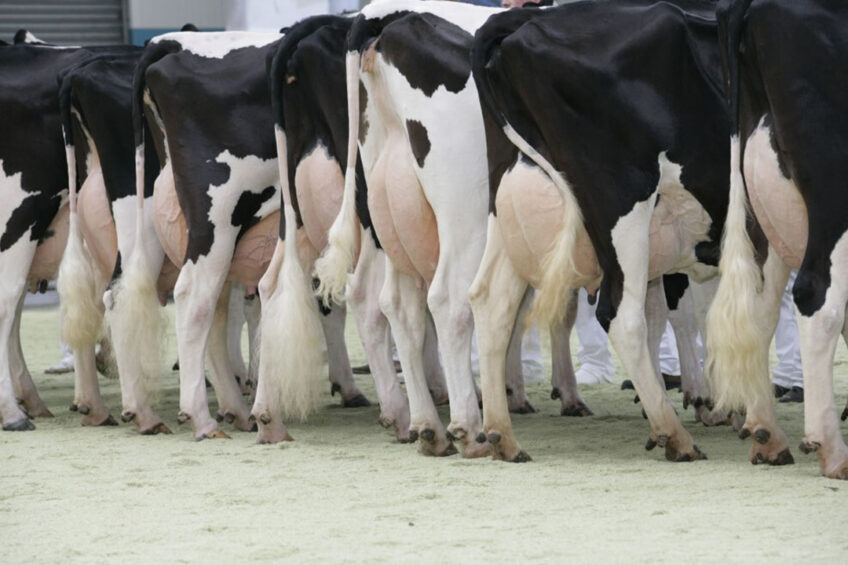Rumen microbiota imbalance and mastitis

Studies have shown that rumen microbiota is a key factor in maintaining the integrity of the blood-brain barrier, blood-testis barrier, rumen and gut barrier, and blood-milk barrier. It has been proposed that the incidence of mastitis in dairy cows is related to the subacute ruminal acidosis and changes in rumen microbiota.
Mastitis is defined as the inflammation of the mammary gland with major detrimental impacts on dairy cow welfare and profitability. Mastitis is regarded as a poor welfare indicator because of its association with pain and discomfort. It is predominantly caused by invasion and colonisation of pathogens such as Staphylococcus aureus, Streptococcus uberis, and Escherichia coli in the mammary gland.
Subclinical mastitis is the presence of an infection without apparent signs of local inflammation or systemic involvement. Clinical mastitis is an inflammatory response to infection causing changes in the udder, milk composition, and increases the somatic cell count.
Economic significance of mastitis
Direct economic costs associated with mastitis include decreased milk yield and quality, alteration in milk composition, reduced productive life of affected cows, increased veterinary costs, discarded milk during the course of treatment, somatic cell count penalties, enhanced risk of premature culling, and reduced fertility.
Mastitis is estimated to cost the global dairy industry US$19.7 to US$32 billion annually. The cost of subclinical mastitis depends on the number of cows with an increased somatic cell count and the losses in milk production which is expected to exceed US$1 billion in the US annually.
Rumen microbiota
The rumen is an anaerobic and methanogenic fermentation chamber containing a community of microorganisms such as bacteria, archaea, protozoa, and fungi that utilise cellulolytic feeds. The rumen microbiota is characterised by its high population density, extensive diversity, and complexity of interactions.
There are 3 micro-environments in the rumen: the liquid phase makes up 25% of the microbial mass, the solid phase contains 70% of the microbial mass, and the rumen epithelial cells and protozoa comprise 5% of the microbial mass.
Subacute ruminal acidosis in dairy cows
Subacute ruminal acidosis decreases milk fat, milk protein, fat: protein ratio, and dry matter and increases urea nitrogen of milk in dairy cows. In addition, somatic cell count and serum amyloid A and the levels of proinflammatory cytokines, which are indicators of mastitis, are enhanced in dairy cows that have suffered from subacute ruminal acidosis. In addition, cows show a large amount of inflammatory cell infiltration, thickening of the alveolar wall, mammary gland destruction, and a higher inflammation score.
The blood-milk barrier is a specific structure that prevents foreign matter from entering the mammary gland from the blood or external environment. Subacute ruminal acidosis impairs the structure and function of the blood-milk barrier and increases the production of immunoglobulins in both the blood and milk. On the other hand, lipopolysaccharide is an important inflammatory substance entering the mammary gland through blood circulation, damaging the blood-milk barrier, and inducing inflammation of the mammary gland in dairy cows.
Subacute ruminal acidosis increases the permeability of the rumen and intestinal barrier inducing the release of rumen derived lipopolysaccharide into the bloodstream. Furthermore, in subacute ruminal acidosis cows, the bacterial community richness and diversity of milk and rumen fluid are lower than healthy cows.
Conclusion
Mastitis is one of the major animal welfare and economic issues in dairy cattle production worldwide. Mastitis is a multifactorial disease in which the environment, the pathogens, and the host interact with each other. Rumen microbiota imbalance due to subacute ruminal acidosis contributes to the development of mastitis in dairy cow. Further research is required to provide nutritional strategies to balance rumen microbiota, thus reducing mastitis incidence.
Join 13,000+ subscribers
Subscribe to our newsletter to stay updated about all the need-to-know content in the dairy sector, two times a week.










